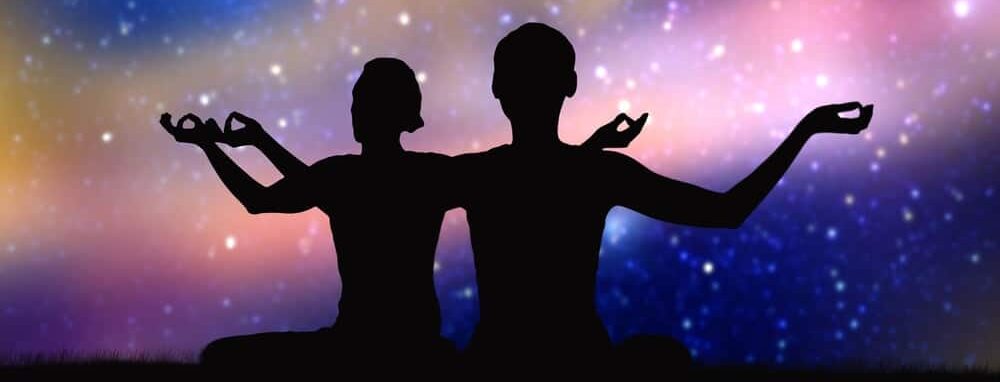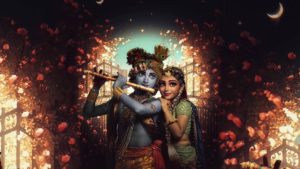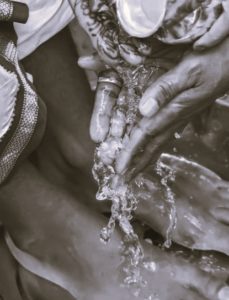
There’s more to Hindu marriage ceremonies than meets the eye. Symbolism abounds. Each ceremony is rooted in a deep philosophical paradigm. Awareness of it lends richness to the rituals and eliminates misinterpretations. To understand, one must begin with the Vedic view of creation and human life.
Paradigm Informing Hindu Marriages:
The entire physical universe has a single source – One God if you like! We all are born of, live in, and ultimately dissolve back into that source., similar to waves on an ocean. The vast ocean is their source, they exist on that substratum, and dissolve back some finite time later, becoming one with it. It’s as if that single source acquires a universe of wave-like forms which are only distinct from each other in their shape, their trajectories but not in essence. They all exist only in reference to an ocean. In that sense we all are also various incarnate forms of One source, One energy, One Conscious Reality that we call God.
If this is new to you, don’t expect to be convinced of this paradigm. That is not the goal of this piece. It is merely to inform that such a perspective exists and it informs the traditional Hindu wedding rituals.

Another paradigm that matters is the Hindu view of God as a Divine Couple – a part of one inseparable whole, two aspects of one Divinity, e.g. Radhe-Krishna, Sita-Ram, Shiv-Parvati, or Vishnu-Mahalaxmi . Vishnu ji & Mahalaxmi ji are the preserver of the universal order while it lives. To a faithful Hindu devotee their divinity is also reflected in human marriage relationships.
So how does this affect how two people are married? This view of human relationships being mere reflections of divinity is reflected in Bride and Groom being considered as God-incarnates. The bride represents Devi MahaLaxmi in all Her splendor and beauty. The groom represents Bhagwan Vishnu in all His glory. That conception, which sees God’s presence in a multitude of forms, readily enables such a view. A Hindu wedding is then merely a re-enactment, here on earth, of the eternal union of the two Divine beloveds.
This considered divinity of the bride & groom, and their consequential Oneness is the backdrop of the wedding. None can be second to the other; they are the two sides of a single coin. In practice the wedding serves as a reminder to the couple of their eternal bond, their complimentary nature and their essential unity despite manifest differences. This paradigm has been coded into practice by ancestors, but the Hindu society has lost awareness of its existence.
The Wedding Story Board:
(a) Dwarachar: The groom arrives at his fiancé’s door to marry her. The bride’s family and friends welcome him with Aarti. This ceremony is based on another element of Indian cultural ethos – atithi satkar, offering a guest to the same soulful welcome that one would offer should God ever show up at the door. This ceremony affords the groom a red-carpet welcome as Vishnu ji visiting Mahalaxmi ji’s home.
(b) Jaimaal: An exchange of garlands when the bride and groom come face to face for the first time prior to the wedding ceremony, reaffirms mutual acceptance of each other by bride and groom.
 (c) Pad Poojan: As part of the wedding rituals you might find bride’s father – the host – washing the groom’s feet. Some people disavow this tradition as disrespectful to the bride’s family. Yet, when one views it in the light of atithi satkar, when the atithi is Bhagwan Vishnu Himself, this objection seems irrelevant. The son-in-law does not gain any leverage over the father-in-law just because of this ceremony. The father-in-law remains a father figure who is worthy of due regard as an elder and as a parent.
(c) Pad Poojan: As part of the wedding rituals you might find bride’s father – the host – washing the groom’s feet. Some people disavow this tradition as disrespectful to the bride’s family. Yet, when one views it in the light of atithi satkar, when the atithi is Bhagwan Vishnu Himself, this objection seems irrelevant. The son-in-law does not gain any leverage over the father-in-law just because of this ceremony. The father-in-law remains a father figure who is worthy of due regard as an elder and as a parent.
(d) Kanyadaan: a ceremonial transfer of bride’s hand to the groom’s, has been labeled as regressive by some. For the current discussion, suffice it to say that this ceremony is a symbolic reunification of the two beloveds by the bride’s family, not a donation or gift. A more detailed treatment of this custom is available here. Lazy, uninformed perspectives lead to erroneous interpretations. The paradigm matters.
Unfortunately, this ceremony is sometimes conflated with various other negative socio-cultural aspects of many Hindu marriages. In particular, it stands as a symbol of a power imbalance between bride’s and groom’s families that has become embedded in other associated customs. Some, like demanding dowry, have been legally addressed but may still be found in practice. It is important to recognize that this imbalance has no sanction in Hindu philosophical paradigm. These need to be, and should be, excised while preserving the reverence for our benevolent traditions. Fortunately, it is also not difficult to find marriages today that exemplify the practice of customary rituals sans the baggage of corrupt social practices.
Conclusion:
It is not a goal of this piece to explain all the marriage rituals in light of the mentioned Hindu philosophical paradigm. It is to illustrate that a Hindu marriage invokes divinity in human beings to bind two people in a union that is fundamentally equal and complimentary. It is a beautiful way to lend strength to human relationships. It is empowering for women and men alike. Some key rituals are designed to put into practice the best of Hindu dharma. That’s how it must remain.
